Welcome back! In the last installment of this series, we visited the phenomenon of “ego depletion”.
Willpower has a limit. No matter how “Strong willed” a person is, there’s a breaking point where he or she reaches for the donuts, or the pipe, or the bottle.
Whatever YOUR weak point is… whether it’s procrastination (guilty!), temper, or your habits will always reveal it.
Now, this post is not going to be concerned with defeating bad habits.
That’s a post for another blog.
Instead, we’ll be going after developing the behaviors you want to have.
Why Install “Good” Habits?
As a serial entrepreneur, I’ve found that only a few key habits really matter to get a business up and running.
Among those habits:
- A daily ritual of “you” time that refreshes and energizes you before the day’s onslaught of stress
- A habit of connecting regularly with existing customers about their needs and getting feedback
- Daily reading through the ads and marketing of people in similar markets (including competitors) to glean ideas
- Testing every part of the sales process (the ‘funnel’) to detect bottlenecks
- Tweaking ad copy to anticipate and answer customer’s objections
- Documenting processes and procedures to save time in the future
Your own business will have its own set of important tasks beside these crucial, basic ones… but the more important thing with ANY task that you as an entrepreneur undertake is this:
BE CONSISTENT.
So how does an entrepreneur make sure to do the few important things instead of the many urgent ones?
After all, owning a business may seem like one fire after another needs putting out, depleting you of the necessary willpower to do what’s needed every day.
How to Install Good Habits
Every New Year’s Day or right around it, we promise ourselves to do better. I’m going to eat right. I’m going to exercise. I’m going to take that risk. I’m going to… fill in the blank.
But by Valentine’s Day that resolution is a dry husk of nothing.
This is because of ego depletion… every decision we make, even ones that are in our own best interest… COST us something. And at one point or another we just decide the price is too high and give up.
How do we install automatic behaviors that don’t drain the decision-making tank?
How do we “stick” to a habit and make it part of our daily routine?
Introducing the Tiny Habits Method
B.J. Fogg, a behavioral scientist dedicated to research about forming positive habits has a unique model.
There are three key components:
- Difficulty (perceived)
- Motivation
- Triggers
One obstacle to forming a habit is the target behavior’s (perceived) difficulty.
For example, if you don’t already have the fitness habit… going to the gym seems like an overdue visit to the dentist.
You imagine everyone making fun of you for not being more fit already.
You dread the effort of learning the newest exercise routine.
You think about how sore you’re going to feel… and haven’t even done a single crunch.
B.J. Fogg’s model shows that even with the best intentions, the perceived difficulty makes establishing a new habit hard potatoes.
It’s easy to slip out of the program when the perception is, “MAN! This is gonna be soooo hard.”
The second factor is motivation.
In my case, I recently suffered a stroke. I’ve got to change my diet, levels of stress, and other lifestyle adjustments. The motivation is HIGH.
But in the case of most 48 year old non-smokers in good shape… the motivation to change may not be as urgent.
If your insurance doesn’t think you’re at risk for a stroke, you probably don’t be that motivated to stick with the New Year’s rez.
The third factor is a trigger.
The trigger presents the reminder to do the behavior before it becomes a deeply ingrained habit.
Whether that’s as simple as putting your running shoes in the doorway, or as drastic as having a sponsor for your AA meetings… the trigger to DO a certain something at a certain time is crucial too.
The Fogg Behavior Model “FBM” does a great job of visually predicting whether your target behavior stands a chance of becoming a habit.
What Determines if You’ll be Successful at Starting a New Habit?
SO again: difficulty (perceived), motivation, and a trigger.
Respecting these three factors makes the job of installing a new habit a breeze.
I’ve been using the B.J. Fogg Behavior Model with pushups.
As part of my recovery from a stroke, physical exercise is a must. My goal is to get to 100 pushups, a performance level I enjoyed as recently as three years ago.
The problem is that I’ve let go my level of performance, and need to regain the habit of daily pushups.
The “willpower” method of installing the habit is destined to fail if I try to do too much.
- Perceived difficulty of doing 60 pushups: HARD.
- Perceived difficulty of doing FIVE pushups… much easier.
Next, the motivation: I recognize the necessity of being more fit, and know that it will help with my recovery.
Furthermore, being successful at installing this habit will build confidence that I might be able to install other, just as important behaviors.
Motivation is often expressed as pain.
In my case, the pain of consequences is greater than the pain of change.
- Motivation to recover the power of speech by physical exercise and other habits: HIGH
- Motivation to be complacent and keep the status quo: LOW
Finally, the trigger.
B.J. Fogg recommends taking an existing habitual behavior and linking it to the desired, target behavior.
In my case… I brush my teeth most days 😉
That’s a perfect trigger.
The formula is: “After I brush my teeth, I will do at least five pushups.”
Ba-ZANG.
Now, here’s the deal:
Because I get off top dead center and do five pushups… often I end up doing MORE.
But it’s the (perceived) low difficulty and high reward, coupled with the reminder of the trigger… that gets me doing the habit.
Faithfulness to the habit is the hard part (which we just gave you a hack for persuading your mind to accept)… afterward, the habit keeps you going and hopefully, upward and onward to greater success.
I’m reminded of Jesus’ mustard seed example. He said that if you had the faith of a mustard seed, you could move a mountain.
Well, sometimes the mountain that needs moving is ME.
😉
And rather than doing it one mountain load at a time… It’s easier and more likely to result in success if we start by planting one tiny seed at a time.
Okay, Steppers! Your turn: I want to challenge you to go to B.J. Fogg’s tinyhabits.com site and take the challenge to establish three positive behaviors that will help you in your business and in your personal life.
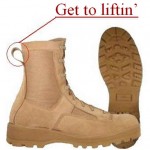
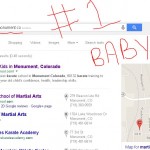
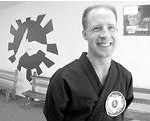


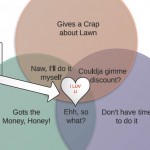


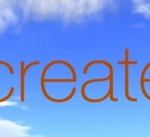
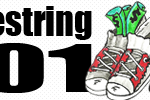
thank you for sharing this information. i’ll use this habits to improve myself and what im doing
I just discovered your blog (from post on KW research tools on robbierichards.com–I knew you’d want to know) and it’s clear you’ve walked the talk. I have taught small business at a community college and have run my own business, and it’s refreshing to read real-world advice, not the tired (and, IMHO, pointless) advice to spend weeks writing a business plan. Thanks for offering real help for people wanting to start a business.
Twitter: shoestring101
says:
Nice! Yes, when I was in high school I actually had a teacher tell me that you need $250K to even think about going into business on your own. Needless to say this high school teacher had NOOOoooo inkling about the real world. I started my first biz at 16, 33 years ago. Looking forward to see if I can indeed be in business after 50… 50 comes in 2017 for this kid. 🙂
Keep Stepping,
Kurt
Kurt Frankenberg recently posted…Install Habits: Increase Success in Business and Life